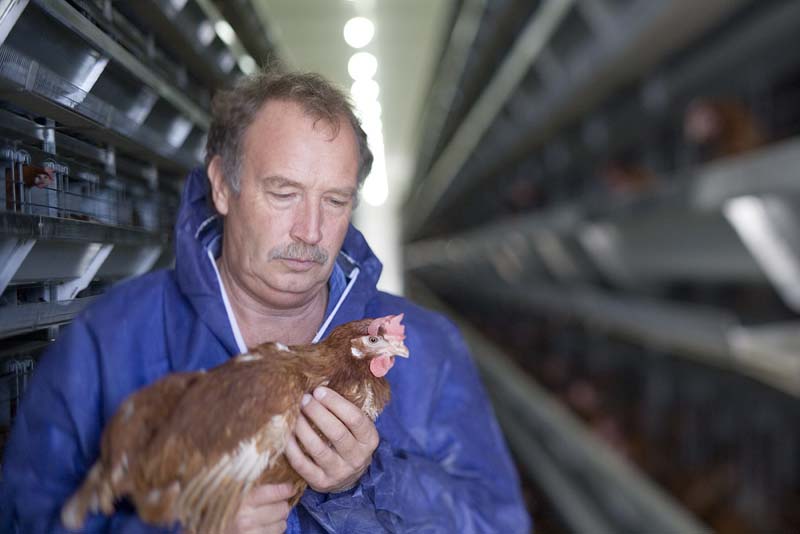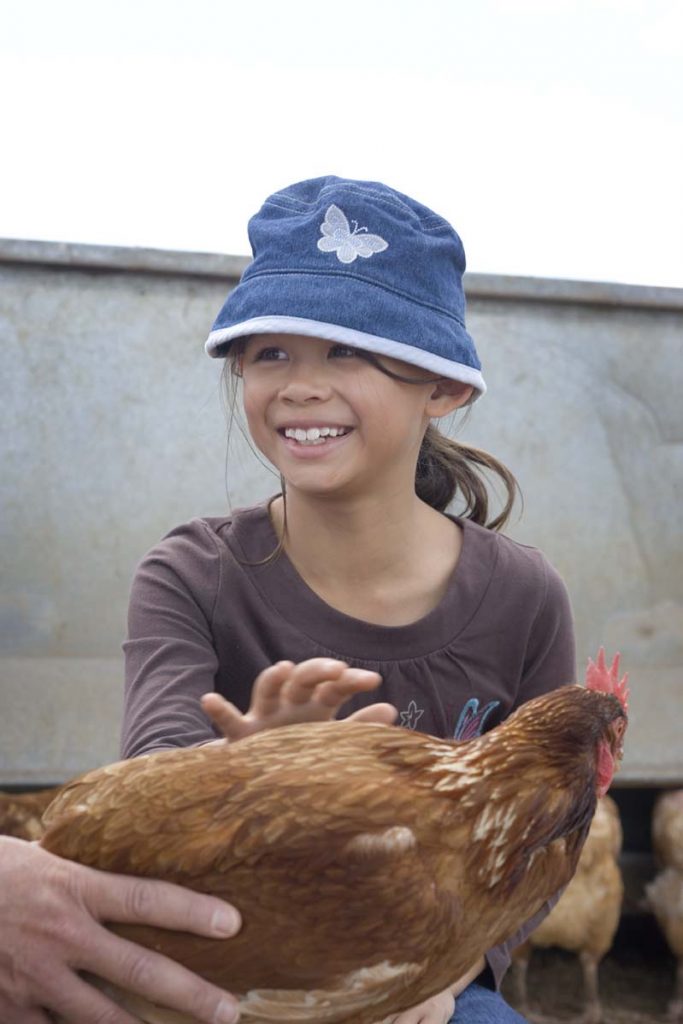Poultry Stress
Fear in poultry
Domestic poultry are exposed to human contact on a daily basis during routine farm husbandry, but often display fearful behaviour when in proximity to humans. The initial fear experienced by these birds may be due to a lack of familiarity with humans, but this may develop into a specific fear of humans over time when exposed to unpredictable, sudden or aversive human contact. This fear response is a powerful emotional state that may influence the welfare and productivity of the birds.

What is fear?
Fear is a protective mechanism that causes the animal to respond to potentially harmful stimuli, real or perceived, through escape or defensive behaviour. Because fear is a state of motivation like hunger and thirst, we cannot directly measure fear but must infer it by observing the bird’s response to a frightening situation. These responses can manifest in two ways – behaviourally and physiologically.
Behavioural responses can include escape and avoidance behaviour, defensive behaviour, freezing, immobility and vocalisations. These responses can be easily measured by observing the bird and recording its behaviour. Understandably, the physiological responses are more difficult to measure.
The immediate physiological response to a fear stimulus is the release of adrenaline into the bloodstream to increase heart rate and mobilise energy that may be needed during the initial response. If this initial fight or flight response is ineffective, a stress hormone called corticosterone is also released into the bloodstream as the bird attempts to cope with the fear stimulus. This is known as an acute stress response, and can last up to several hours. During this short period, corticosterone is beneficial in a stressful situation as it increases the concentration of glucose in the blood to provide energy for the bird to escape or defend itself.
At this point, the bird will not suffer any ill consequences if the stressor is removed. It will have only received a fright and lost a small amount of energy. However, if the stressor continues, or a series of acute stress responses occur, the bird will begin to suffer a chronic stress response. A prolonged elevation of corticosterone can decrease the health, productivity and immunity of the bird as the physiological cost of maintaining a constant stress state takes its toll on the body. The chronic stress response, particularly its adverse consequences on growth, immunology or reproduction, is indicative of poor animal welfare.
When combined with behavioural measures, appropriate physiological measures can provide an accurate assessment of fear.
Effects of fear on productivity
This chronic stress response has been assumed to be responsible for the lower productivity seen in fearful birds, as the corticosterone produced influences the birds’ nitrogen balance, including increased protein breakdown and energy expenditure which in turn affects reproductive output. Negative handling, which can induce a chronic stress response, has been found to increase fear and egg shell deformities and decrease productivity, feed efficiency, resistance to infection, ease of handling and growth rates. Inappropriate escape attempts within cage systems can also cause injury to the bird and her cage-mates.
Clearly, any effect that reduces productivity and resistance to disease is undesirable in a commercial situation such as in the egg and chicken meat industries. High levels of stress and fear are also undesirable, as they are indicative of poor animal welfare.

People handling stock should be taught to handle them without causing fear Source: Australian Egg Corporation Limited
Reducing fear
Several methods for reducing fear in poultry have been proposed, such as enriching the birds’ environment, allowing them to become used to humans and genetic selection toward less fearful strains of birds. Theoretically, environmental enrichment introduces animals to novelty and allows them to learn that novelty is not harmful. When these animals are later introduced to potentially frightening stimuli, they are able to adapt better than animals in a less enriched environment.
Frequent contact with humans that is not aversive in nature will also help to reduce the fear of humans experienced by the birds. This contact does not need to be physical; visual contact of a slow and predictable nature has been found to be effective, and can be implemented by farm staff at no cost. However, a current limitation is that our understanding of the human behaviours that affect birds’ fear responses is poor.
Genetic selection would seem to be the most likely long-term candidate for reduction of fear in commercial flocks. Behaviour is under strong genetic control and it may be possible to develop commercial strains that are more docile than others. In reality, it is unlikely that any one method will be suitable on its own and that a combination of the above methods will be the most beneficial. When more information is available on the specific factors affecting the fear of humans seen in poultry, the most suitable method(s) and appropriate training, if required, can be developed.

